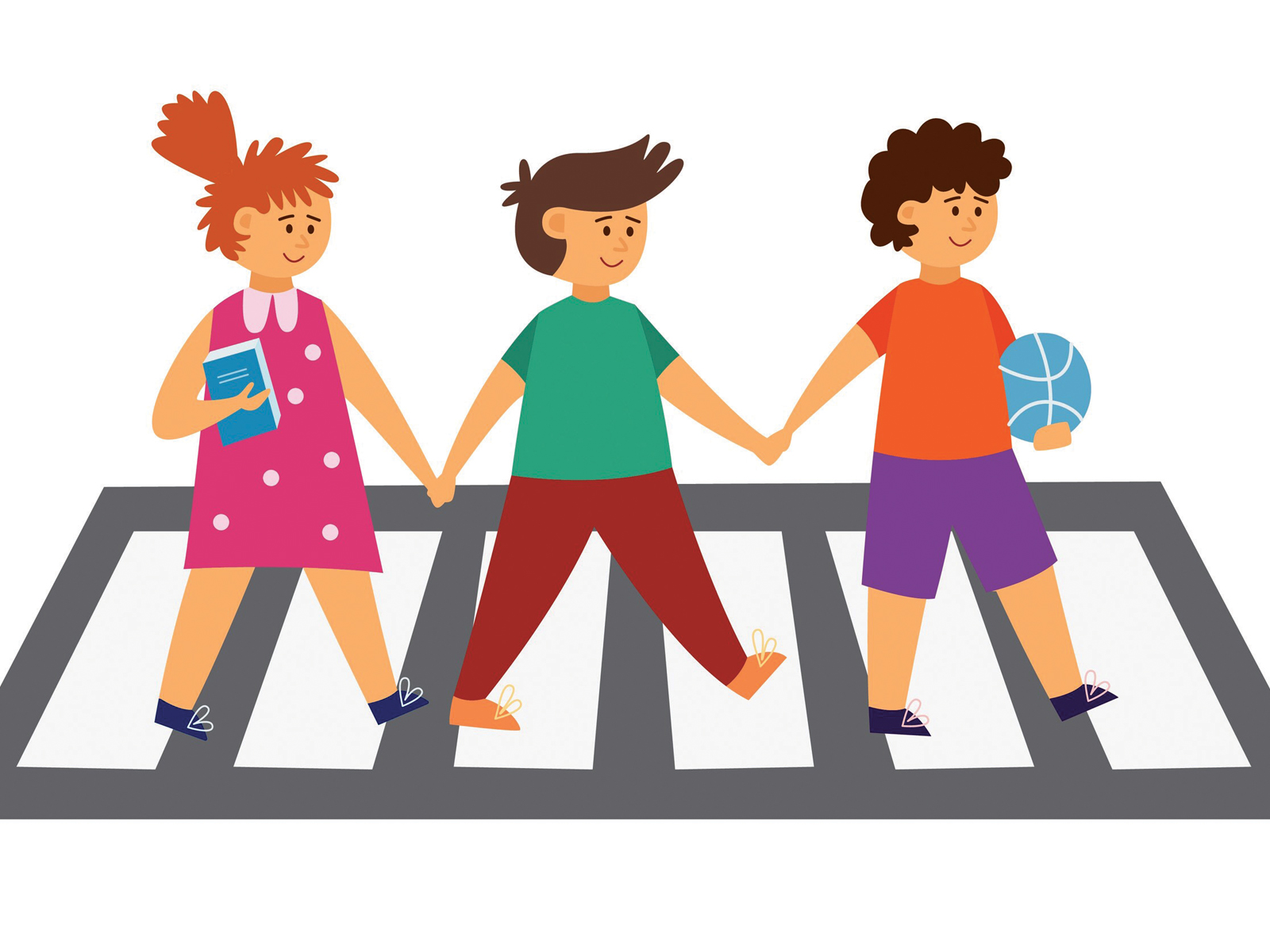Each year, an average of 1,078 children in Canada under age 15 are injured as pedestrians and another 570 are injured as cyclists in collisions with motor vehicles.
How to be safe on the road. Show your children how it’s done by being a good role model as you go about your day-to-day activities. Take a proactive approach with learning and developing safe habits in a fun and interactive way. Ideas include planning your child’s walking route together. Reviewing street names and landmarks while walking together. Create a “traffic sign” guessing game at home and quiz your child on traffic signs when you are at corners and intersections, using marked crosswalks and crossing at lights.
Lead by example
Experts suggest that following these basic tips as a family will not only instill road safety habits that will last a lifetime but it will significantly reduce their chances of being in an accident. They’re easy to learn and teach:
Look
Left-right-left and shoulder check before crossing. Make eye contact with drivers and keep looking for approaching vehicles while crossing.
Listen
Remove your headphones so you can hear approaching traffic that may be hard to see.
Inside edge
Walk on the inside part of the sidewalk away from the road. If there’s no sidewalk—walk facing oncoming traffic, so you can see approaching vehicles.
Obey signals
Always use crosswalks and follow the pedestrian signals.
Never cross at bends
They’re blind spots for motorists and they won’t have time to spot you and stop the car if you get in their way.
Hands in
Children tend to think it’s fun to put their hands out of the car or school bus windows even when they are moving. This is not only dangerous as they could be hit by vehicles approaching from the opposite direction but it also puts them at risk of being whacked by road signs, trees and strings of lights or patio furnishings that are close to the road.
Be seen
Wear reflective materials or bright clothes and use lights after dark. Walk on the inside edge of the sidewalk away from the road. If there’s no sidewalk—walk facing oncoming traffic, so you can see approaching vehicles. Always use crosswalks and follow the pedestrian signals.
Sidewalks please
Teach your kids to use only the sidewalk when walking on the road. Set an example for them by using the walking paths yourself. Whether it is a busy street or not, encourage your kid to use the sidewalk to stay safe on the road.
Pay attention and listen
Teach your kids that they may not always be able to see an oncoming vehicle, especially if they are standing near a bend or at a noisy corner. They should listen to know if a vehicle is approaching. Cars and other vehicles on the road often use the “horn” at bends and at unmanned intersections to indicate that they are nearing.
Don’t run on roads
Children may not always have patience and may tend to run across the street to get to the other side. They may also run along the road in your neighbourhood while playing or get distracted and run after a ball, for example. Tell your kids never to run across or along the road.
A heads up for drivers
When you’re tired, busy running errands, talking on the phone or rushing to get somewhere, it’s easy to go on autopilot or not be as alert as you should be behind the wheel. Here’s some reminders that we should all think about on a regular basis to maintain neighbourhood safety:
Watch your speed
Lowering your speed gives you time to react and brake if need be. It also lowers the chances of killing or seriously injuring someone if there is a crash. Rule number one: Always yield to pedestrians and stop for school buses when their lights are flashing.
School zones
Be especially cautious around schools. There’s a 30km/h speed limit in effect in school zones from 8 a.m. to 5 p.m. When school is in session and in playground areas from dawn until dusk, unless otherwise posted. Take your time when you’re running errands or dropping your child at school, an activity or at a friend’s house. Drop off your child close to the sidewalk and don’t let them dash from the middle of the road.
Keep your distance
Ensure you give cyclists space on the road. When parking on the street, always check for cyclists before opening your door.
Put down the distractions
In the few seconds you turn and reach for something in the vehicle, your eyes are off the road. Leave whatever it is until you stop. Don’t use handheld devices of any kind; these create high levels of distraction and risk among drivers.
Be alert
Traffic congestion and unsafe driver behaviour are common in school zones during drop-off and pick-up times. As a driver, be patient and expect kids to be kids. Watch for little pedestrians and cyclists darting between cars or moving suddenly onto the road.
Drive sober If you are planning to drink alcohol or use drugs, don’t drive. Wise advice includes using a designated driver, or taking public transit if you can’t stay overnight.
Easy does it
And above all else, don’t rush. When it comes to driving or navigating the neighbourhood on foot it pays safety dividends to stay focused and engaged. Whether you’re out and about either as a pedestrian, a driver or someone who is escorting a young child. Remember the road safety rules and always, watch out for the other guy.
Visit parachute.ca for more tips.














